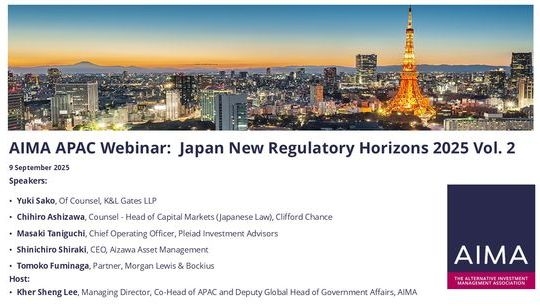Mastering employee compliance: Essential strategies for CCOs
By Ann Keitner; Marc Salter, ACA Group
Published: 24 March 2025
Mastering compliance is no longer just about ticking regulatory boxes – it is a strategic imperative that drives future growth. An effective compliance programme requires leadership that has a deep understanding of regulatory requirements and creates a culture where compliance is built into everyday operations.
Chief Compliance Officers (CCOs) and compliance leaders should promote continuous education and empower employees to take a proactive role. When employees see compliance as a shared responsibility rather than an obligation, adherence improves, ethical decision-making strengthens, and organisations establish themselves as trusted leaders in their industry.
By leveraging robust training programmes, regulatory technology, and a strong compliance-driven culture, firms can mitigate risk, enhance operational efficiency, and gain a competitive edge.
Engage employees with meaningful compliance training
Training programmes form a vital pillar of compliance; if training falls short, employees will disengage, and critical information is quickly forgotten. To embed compliance into company culture, training must be dynamic, continuous, and applicable to the real-world scenarios. For some firms, training must go beyond generic compliance topics to cover specialised areas such as insider trading laws, personal trading policies, and regulatory reporting requirements.
Enhance the effectiveness of your firm’s compliance training by implementing these strategies to improve engagement and retention.
- Commit to continuous learning: Regularly update employees on the latest regulations and industry trends. Effective training programmes should include frequent updates to keep staff informed and prepared.
- Introduce interactive learning: Incorporate engaging methods such as gamification, simulations, and scenario-based exercises. Interactive training helps employees retain information better and apply it in real-world situations.
- Perform regular assessments: Use mock exams and periodic reviews to evaluate employees’ understanding of compliance requirements. This approach will help identify knowledge gaps and reinforce key concepts.
Optimise compliance with technology and expert support
The most effective compliance programmes strike a balance between risk management, resource management, and repeatable processes. Utilising technology and outsourcing is key to optimising efficiency and maintaining a balanced risk management strategy.
Here are some best practices to enhance compliance operations with the right mix of automation, outsourcing, and proactive industry engagement.
- Explore regulatory technology tools: Utilise technology to streamline employee compliance processes and automate routine tasks. Regulatory technology can enhance efficiency and accuracy in daily compliance-related activities. Early adoption of regulatory technology allows your firm to establish a solid compliance foundation that can easily scale as your business grows, helping to mitigate risk and adapt to increasing regulatory demands.
- Integrate technology with a compliance-driven culture: It’s important that technology doesn’t work in isolation. Ensure that regulatory technology is seamlessly integrated into your organisation’s compliance culture, where employees at all levels understand its value and how it supports overall compliance goals. This integration enhances adoption and maximises the technology’s effectiveness.
- Outsource with confidence: Collaborate with compliance consultants and industry experts to gain insights and best practices. Leveraging strategic alliances can provide valuable support and elevate your firm’s compliance programme.
- Stay ahead of regulatory shifts: Participate in industry conferences and stay up-to-date on regulatory changes. Actively participating in industry networks and regulatory discussions helps ensure your firm stays ahead of new trends and evolving compliance demands.
Cultivate a compliance-first culture
With a proactive, strategic approach to compliance, your business is not only safeguarded, but primed for growth and longevity. When compliance is embedded into daily workflows rather than treated as an obligation, adherence becomes second nature.
Compliance must be integrated into every decision-making process, especially in industries where decisions are often made in real-time. This approach helps ensure that employees understand how their actions influence the firm’s long-term success, not just in terms of compliance, but also in building a reputation for integrity and sound judgment.
Cultivate a compliance-first mindset across your organisation with some of these key strategies.
- Establish clear communication: Clearly articulate compliance expectations and the importance of adhering to regulations. Open and transparent communication helps employees understand their roles and responsibilities.
- Encourage open dialogue: Create an environment where employees feel comfortable discussing compliance issues and seeking guidance. Encourage proactive communication to address potential concerns before they escalate.
- Set the tone at the top: Embed compliance into leadership priorities to showcase its value as a business advantage rather than a regulatory obligation.
- Set clear expectations: Implement clear compliance goals and performance metrics. Ensure that employees understand how their actions impact the organisation’s overall compliance efforts.
Strengthen employee compliance, strengthen your firm
By integrating these strategies, firms can move beyond regulatory checklists and to-do’s and start fostering a culture where compliance becomes instinctive. A proactive approach does more than mitigate risk; it strengthens operational efficiency, reinforces accountability at every level, and ensures firms are prepared to meet regulatory challenges with confidence. Compliance should not be viewed as a series of isolated tasks, but as a dynamic part of business success.
For CCOs and compliance leaders, the goal is not only to enforce policies, but to establish a framework where compliance is embedded into every decision. A compliance-first mindset helps employees understand how their actions affect the firm’s reputation, stability, and long-term success, making compliance an integral part of their daily responsibilities. Organisations that cultivate this perspective are not only more resilient to regulatory scrutiny, but also position themselves for sustainable success in a competitive market.









